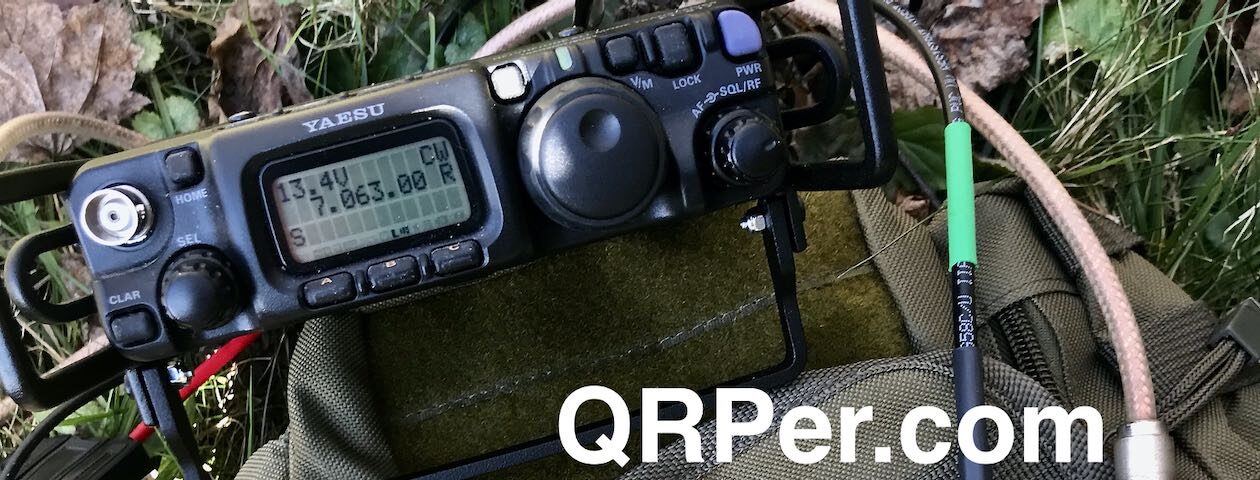You might recall a recent POTA activation where Jonathan (KM4CFT) joined me at the Vance Birthplace K-6856 US-6856–?
Jonathan used my Penntek TR-45L for his portion of the activation, and I was pleased he got to spend some time with this magnificent CW machine. You might also recall that it still had a buzz in the speaker audio–something inside the radio was vibrating.

I tried to track down the buzz as Jonathan operated by tightening some of the screws holding on the speaker grill (yeah, I’m sure that was annoying, and he’ll think again before activating with me in the same space–!). I knew, though, it was something inside the chassis that was vibrating with audio.
As I also mentioned, my TR-45L was a prototype unit (I helped Beta test it)–it had a couple of mods and wasn’t exactly representative of the upgraded production model.
John (WA3RNC) at Penntek reached out to me after I published my recent field report and video; he offered to upgrade my TR-45L to the production chassis which would sort out the buzz. I was most grateful, of course!
He then asked if I would be interested in checking out the TR-45L “Skinny,” which is essentially a TR-45L in a much skinnier chassis. The Skinny model lacks the ATU and battery options but is lighter weight and more portable. I mentioned to John that I’d like to purchase one, actually. Since John was interested in sponsoring QRPer, we ended up working out a barter (at full market price) for ad space. I love this arrangement, actually, because I was going to approach him about sponsorship at some point anyway.
The Skinny!
Now keep in mind that the TR-45L is one of my favorite CW radios. I love the audio, the receiver characteristics, and the “Apollo era” aesthetic. I think it’s one of the best-looking and best-sounding radios on the market.
The Skinny is just like the bigger TR-45L, just roughly half the depth. I did have concerns that the audio wouldn’t be as good since the acoustic chamber would be smaller, but turns out, I had nothing to fear. The Skinny’s audio is on par with its bulkier sibling.
There was no learning curve with the Skinny because 1.) it’s identical in operation to my TR-45L and 2.) Penntek radios have super simple interfaces, and almost every function has a top-level direct control.
Zebulon Vance Birthplace (US-6856)
 On Tuesday, February 27, 2024–the day after receiving the TR-45L Skinny–I packed it up and took it to the Vance Birthplace for its inaugural POTA activation!
On Tuesday, February 27, 2024–the day after receiving the TR-45L Skinny–I packed it up and took it to the Vance Birthplace for its inaugural POTA activation!
That day, I had about 90 minutes to enjoy an activation, and I was looking forward to spending time with the new Skinny.
Vance was a great choice that day because the weather was moody; it was gusty, rainy, and I knew their picnic shelter would provide excellent cover.

The TR-45L Skinny, unlike my original TR-45L, has no internal Z-Match ATU, nor does it have an internal battery. In fact, there’s no room for either in the Skinny, so it’s not even an option.
I paired the Skinny with my Chelegance MC-750, which is a resonant antenna when deployed correctly, so there was no need for a matching device. I supplied power via one of my 3Ah Bioenno LiFePO4 batteries.
Setup was simple and easy!
Gear:
 Note: All Amazon, CW Morse, ABR, Chelegance, eBay, and Radioddity links are affiliate links that support QRPer.com at no cost to you.
Note: All Amazon, CW Morse, ABR, Chelegance, eBay, and Radioddity links are affiliate links that support QRPer.com at no cost to you.
- Penntek TR-45L “Skinny”
- Penntek TR-45L Padded Bag (Available Soon)
- High Visibility Jacket ABR240-UF with PL-259s and 5 Ferrites (Use Coupon Code ABR10QRPER for 10% Discount!)
- Chelegance MC-750
- SO-239 to BNC Adapter
- Key cable: Cable Matters 2-Pack Gold-Plated Retractable Aux Cable – 2.5 Feet
- Begali Traveler
- GoRuck GR1 USA
- Bioenno 3 Ah LiFePo Battery (Model BLF-1203AB)
- GraphGear 0.9mm 1000 Automatic Drafting Pencil
- Rite In The Rain Top Spiral Notebook
- Camera: DJI OSMO 4 action camera with Sensyne Phone Tripod
On The Air
 I hopped on the air with the intention of working 20 and 17 meters. Continue reading A Slimmed-Down Solution: My first POTA activation with the Penntek TR-45L “Skinny”
I hopped on the air with the intention of working 20 and 17 meters. Continue reading A Slimmed-Down Solution: My first POTA activation with the Penntek TR-45L “Skinny”






























































































